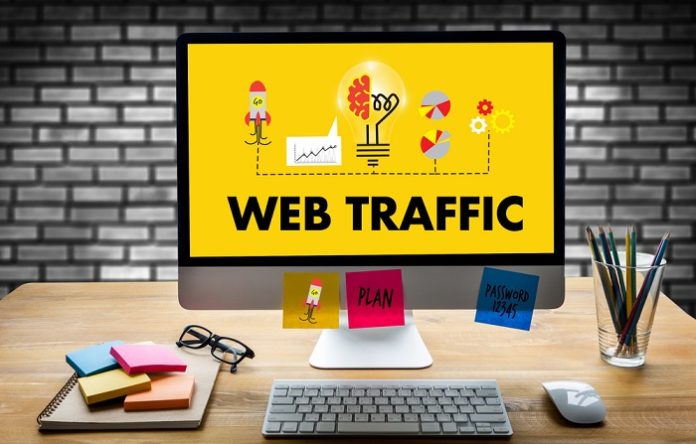When it comes to running a website or online business, there is one key metric that can make all the difference: website traffic. But what exactly is website traffic, and why is it so important? There are different types of website traffic to consider, each with their own benefits and drawbacks. Whether you’re a seasoned website owner or just starting out, understanding the ins and outs of website traffic can help you make informed decisions about your online presence.
Here are some key steps to buy traffic for website:
Understanding Paid Traffic
Paid traffic is a form of online advertising where website owners pay for visitors to come to their site. This can be done using a variety of methods such as pay-per-click (PPC), display advertising, social media advertising, and sponsored content.
Advantages of Paid Traffic
One of the biggest advantages of using paid traffic is that it is a quick and effective way to get visitors to your site. Unlike organic traffic, which can take months or even years to build up, paid traffic can start driving traffic to your site almost instantly. This can be especially useful for new websites or businesses that need to generate traffic quickly.
Disadvantages of Paid Traffic
While there are many advantages to using paid traffic, there are also some disadvantages to consider. One of the biggest disadvantages of cheap website traffic is the cost. Paid advertising can be expensive, and if not done correctly, can result in wasted money and low return on investment (ROI).
Setting Your Traffic Goals
When it comes to running a website, traffic is everything. Without it, your website is practically invisible to the world. But how do you set traffic goals that are achievable and realistic?
In this guide, we’ll walk you through the process of understanding website traffic goals, identifying your target audience, and determining your budget.
Understanding Website Traffic Goals
Before you can set traffic goals, you need to understand what website traffic is and why it’s important. Website traffic refers to the number of people who visit your website. The more traffic you have, the more opportunities you have to convert visitors into customers or clients.
Also read: How to Buy Website Traffic: Unlocking the Path to Success?
To set traffic goals, you need to determine how much traffic you currently have and how much traffic you want to have. This can be done by analyzing your website’s analytics data. Look at your website’s traffic over the past few months to get a baseline of your current traffic levels. Then, set a realistic goal for how much traffic you want to have in the future.
Identifying Your Target Audience
Your target audience is the group of people you want to attract to your website. Identifying your target audience is crucial for setting traffic goals because it helps you understand who you’re trying to reach.
To identify your target audience, ask yourself the following questions:
– Who are the people most likely to be interested in my website?
– What are their interests, needs, and challenges?
– Where do they spend their time online?
Once you’ve identified your target audience, you can get paid for website traffic to start creating content and advertising that is specifically tailored to them.
Determining Your Budget
Your budget will depend on a variety of factors, including your industry, your competition, and your goals. If you’re just starting out, you may need to invest more money in advertising and marketing to get your website off the ground. As your website grows and becomes more established, you may be able to reduce your advertising budget.
When setting your budget, consider the following:
– How much money do you have to spend?
– What advertising and marketing channels are most effective for reaching your target audience?
– How much do those channels cost?
Choosing Your Traffic Source
Popular Traffic Sources
- Search Engines: Search engines, such as Google, Bing, and Yahoo, are the most popular traffic sources. To get traffic from search engines, you need to optimize your website for search engines using search engine optimization (SEO) techniques. SEO involves optimizing your website’s content, structure, and keywords to rank higher in search engine results pages (SERPs).
- Social Media: Social media, such as Facebook, Twitter, Instagram, and LinkedIn, is another popular traffic source. To get traffic from social media, you need to create engaging content that people want to share. You can also use paid advertising on social media to reach a wider audience.
- Paid Advertising: Paid advertising, such as Google AdWords, Facebook Ads, and display advertising, is a quick way to get traffic to your website. However, it can be expensive, and you need to have a good understanding of your target audience to get the best results.
Creating Your Campaign
The first step in creating your ad campaign is to define your goals. What do you want to achieve with your ads? Do you want to increase brand awareness, drive sales, or generate leads? Once you have a clear idea of your objectives, you can move on to setting up your campaign.
Next, you’ll need to set your budget. This will determine how much you’re willing to spend on your campaign and how long it will run for. You can choose to set a daily budget or a total budget for the entire campaign.
Choosing your ad format
Once you’ve set up your campaign, the next step is to choose your ad format. Different platforms offer a variety of ad formats, each with its own strengths and weaknesses. Some of the most popular formats include:
– Text ads: These are simple ads that consist of text and a link to your website. They’re typically used for search engine advertising.
– Display ads: These are visual ads that are displayed on websites and social media platforms. They can be static or animated and can include images, videos, or interactive elements.
– Video ads: These are ads that are played before, during, or after a video on platforms like YouTube.
Tracking and Analyzing Your Results
Web analytics is the process of collecting and analyzing data from your website to gain insights into how visitors are interacting with your site. With web analytics, you can track the number of visitors to your site, where they’re coming from, how long they’re staying, and what pages they’re visiting.
There are many web analytics tools available, such as Google Analytics, which is free and easy to use. By using web analytics, you can make data-driven decisions about how to improve your website and increase conversions.
Measuring your campaign success
If you’re running a marketing campaign, it’s important to measure your success. By tracking your campaign metrics, you can see how many people are interacting with your campaign and how well it’s performing.
Some important campaign metrics to track include:
– Click-through rates (CTR): the number of clicks your campaign receives divided by the number of impressions (views).
– Conversion rates: the percentage of visitors who complete a specific action, such as filling out a form or making a purchase.
– Cost per click (CPC): the amount you’re paying for each click on your campaign.
Best Practices for Buying Traffic
Avoiding click fraud
Click fraud occurs when someone clicks on your ads with no intention of actually engaging with your website. This can lead to wasted ad spend and lower ROI. To avoid click fraud, monitor your campaign metrics regularly and use tools like ClickCease to detect and block fraudulent clicks.
Staying within your budget
When buying traffic, it’s important to set a budget and stick to it. Use tools like Google Ads’ budget planner to estimate your costs and ensure that you’re not overspending. Additionally, consider using cost-per-click (CPC) bidding to ensure that you’re only paying for clicks on your ads.
Testing and tweaking your campaign
To ensure that your traffic is high-quality and that you’re getting the best ROI, it’s important to test and tweak your campaign regularly. Some best practices for testing and tweaking your campaign include:
– Testing different ad formats, such as text ads versus display ads.
– Testing different targeting options, such as location targeting or audience targeting.
– Tweaking your ad copy to improve CTR and conversion rates.
Conclusion
By following these best practices, you can ensure that your traffic is high-quality and that your campaigns are performing at their best.







